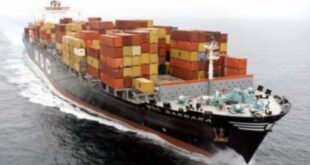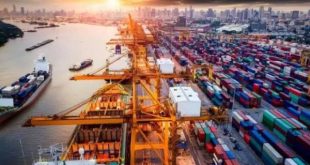About 15,000 aircraft service nearly 10,000 airports and operate over routes approximately 15 million km in total length. More the 2.2 billion passengers flew on the world’s airlines for vacation and business travel, and well in excess of a third of the value of the worlds manufactured exports were transported by air. Further, aviation industry generates 32 million jobs worldwide and contributes nearly 8% to world gross domestic product. It goes without saying that air transportation has a big economic footprint. However, the aviation industry is not immune to the impact it has on climate change. As the aviation skies continue to crowd so does the impact of CO2 emissions.
By 2020, global international aviation emissions are projected to be around 70% higher than in 2005 and the International Civil Aviation Organization (ICAO) forecasts that by 2050 they could grow by a further 300-700%.
All air transport CEOs and boards of directors must mobilize their resources and work together for the near elimination of C02 emissions. The 2020s must be the turnaround decade when we get onto a downward emissions trajectory. I propose a goal to reduce airline fuel consumption 30% from nearly 20 billion gal. in 2020 to 14 billion gal. by 2030. That would demonstrate the way for the worldwide industry to change.
Environmental impact of Flight

The main environmental concerns associated with aircraft are climate change, stratospheric ozone reduction (leading to increased surface UV radiation, regional pollution, and local pollution. During flight, aircraft engines emit carbon dioxide, oxides of nitrogen oxides of sulphur, water vapour, hydrocarbons and particles – the particles consist mainly of sulphate from sulphur oxides, and soot. These emissions alter the chemical composition of the atmosphere in a variety of ways, both directly and indirectly.
While much of the CO2 is absorbed on Earth in plants and the ocean surface, a huge amount goes into the atmosphere, where it and other gases create a kind of lid around the globe –the so-called greenhouse effect. Heat that would normally escape into space is thus reflected back to Earth, raising global temperatures. Nitrogen oxides (NOx) and H2O vapor from aircraft increase the formation of cirrus clouds and create contrails, which are visible from the ground.
The combination of ” contrails and cirrus clouds warm the Earth’s surface magnifying the global warming effect of aviation. Together, NOx and water vapour account for nearly two-thirds of aviation’s impact on the atmosphere (IPCC estimated that radiative forcing from all aircraft greenhouse gas emissions is a factor of 2 to 4 times higher than that from its CO2 emissions alone). Hence any strategy to reduce aircraft emissions will need to consider other gases and not just CO2″.
The environmental issues associated with flight are also correlated with the altitude at which the carbon dioxide is emitted, the higher the attitude the greater damage to the ozone layer. Research has shown that the majority of flights fly at an altitude between 29,500 ft and 39,400 ft (9-12 km).
The lower spike in fuel burn and emissions in the 0-1 km range is attributed to aircraft emissions from the ground when aircraft are idling or taxiing. It was noticed after the events of 9/11 (when there was a temporary halt to all commercial flights) that the Earth’s temperature was 1 to 2 degrees Celsius colder, which coincides with the theory that aircraft emissions do impact the environment.
New thinking is required. It is time to evaluate ideas that previously would have been unthinkable.
•Plan less polluting traffic growth: Much of this will happen naturally as travelers respond to the perils of climate change. More than three-quarters of long-range air travel is leisure—a luxury. People will fly less often, certainly not as far, and may even stop flying. Businesses will fly their employees less, too. Forget Boeing/Airbus 20 year forecast of 50,000 airplanes.
•Eliminate premium-class seating worldwide in all domestic and intercontinental airliners over the next five years: It is unconscionable that a few people should be allowed to pay extra for more comfort, that airlines would promote premium seating for increased profits, or that manufacturers happily would go along with this extra-polluting system to sell more aircraft, engines and equipment. Premium-class fliers probably do not know they are part of the problem, and many would not fly in special sections if they knew.
Widebody intercontinental airliners with premium-class spaces carry 30-150 fewer passengers than they were built to seat. Narrowbody domestic aircraft typically carry only 6-8 fewer passengers than they were designed to seat, but when multiplied by many more thousands of aircraft that can add up to a lot of premium space. That substantially increases the fuel burned per seat.
Modifying these aircraft to carry more passengers would enable the industry to retire hundreds of older, unneeded aircraft and cut back on orders. Carrying more passengers in fewer airplanes would yield a dramatic reduction in CO2 emissions.
•Change airline operations to save fuel: Cargo should be banned on all passenger flights and shifted to air freighters and other means. Fly more intercontinental one-stops and refuel to avoid carrying many tons of fuel for thousands of miles; analyze the 2,500 daily flights across the North Atlantic; try to save 25% of fuel burned. These airlines should be flying 400-500 single-class passengers per plane across oceans, not the 300 or so in an aircraft like the proposed Boeing new midmarket airplane and never in smaller single-aisle aircraft.
•Build a new Domestic Short-Haul transport: I estimate a twin-aisle family of aircraft seating 7-8 people side by side, using known technology and entering service at the end of 2026, would save 40% of the fuel burned per seat-mile versus today’s most popular—but outdated—mostly aluminum, reengined narrowbodies. This new aircraft would carry 270-300 passengers (and no cargo) up to 2,000 mi. at a 10% slower cruise speed. The initial engines might be upgraded models of the A320neo’s powerplants. Airbus and Boeing should check it out.
Airline fleets that combine many more of these larger people-movers with many fewer narrowbodies would save billions of tons of CO2 before 2050, especially when flying the dense routes between thousands of large cities in North America, Europe and Asia. By the 2030s, this aircraft should be flying more individuals on more trips than any other.
•Accelerate clean-fuel production: By 2030, 4 billion gal. per year of clean fuels should be refined in the U.S. for its airlines. To virtually eliminate carbon emissions by 2050, the global industry will need to scale up production to 100 billion gal. of low-emission fuels annually—in addition to all other fuel savers and further electrification. Industry must determine how much fuel is feasible. Plans are needed.
This vital industry must make war on climate change a top-priority issue instead of ignoring it. Boards should insist, CEOs should insist, stockholders should insist and employees should insist. Before too long, the public will insist. The industry can remain healthy, it just shouldn’t be focused on growth.
Global scheme to offset emissions
In October 2016, the International Civil Aviation Organization (ICAO) agreed on a Resolution for a global market-based measure to address CO2 emissions from international aviation as of 2021. The agreed Resolution sets out the objective and key design elements of the global scheme, as well as a roadmap for the completion of the work on implementing modalities.
The Carbon Offsetting and Reduction Scheme for International Aviation, or CORSIA, aims to stabilise CO2 emissions at 2020 levels by requiring airlines to offset the growth of their emissions after 2020.
Airlines will be required to:
monitor emissions on all international routes and offset emissions from routes included in the scheme by purchasing eligible emission units generated by projects that reduce emissions in other sectors (e.g. renewable energy).
During the period 2021-2035, and based on expected participation, the scheme is estimated to offset around 80% of the emissions above 2020 levels. This is because participation in the first phases is voluntary for states, and there are exemptions for those with low aviation activity. All EU countries will join the scheme from the start.
A regular review of the scheme is required under the terms of the agreement. This should allow for continuous improvement, including in how the scheme contributes to the goals of the Paris Agreement.
Work is ongoing at ICAO to develop the necessary implementation rules and tools to make the scheme operational. Effective and concrete implementation and operationalization of CORSIA will ultimately depend on national measures to be developed and enforced at domestic level.
 MMS PLUS NG – Maritime, Aviation, Business, Oil and Gas News Online Newspaper with coverage in Maritime, Oil and Gas, Aviation, Power and Energy as well as Financial News
MMS PLUS NG – Maritime, Aviation, Business, Oil and Gas News Online Newspaper with coverage in Maritime, Oil and Gas, Aviation, Power and Energy as well as Financial News










